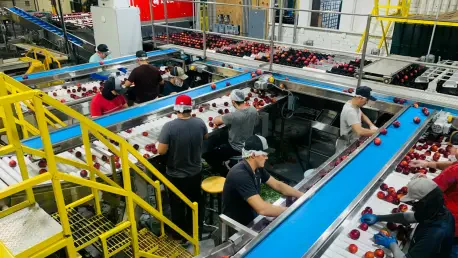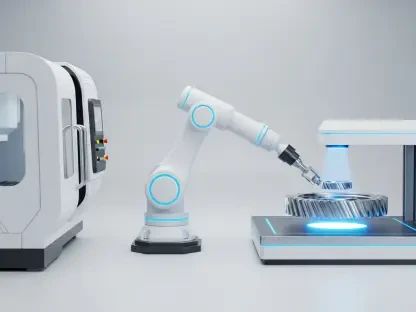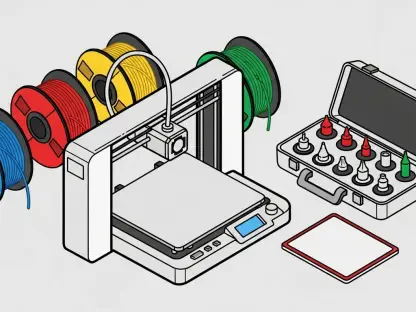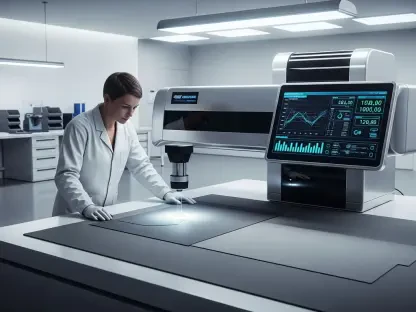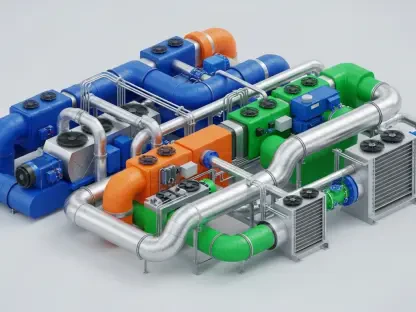In the ever-evolving landscape of manufacturing, the integration of Information Technology (IT) and Operational Technology (OT) is no longer a mere option but a strategic imperative. This critical collaboration stands at the crossroads of digital and physical innovation, promising transformative benefits for manufacturing efficiency, security, and competitiveness. However, many organizations still face significant challenges in achieving seamless integration that maximizes value across their operations. As disparate systems vie for dominance within organizations, the divide between IT and OT can lead to inefficiencies that stifle potential growth. This article explores the dynamics of this crucial partnership and how overcoming these barriers can propel manufacturers into a new era of industrial advancement.
The Dichotomy of IT and OT
Distinct Roles and Responsibilities
The fundamental distinction between IT and OT lies in their operational focus. IT primarily deals with the management of data, digital systems, and networks, ensuring that the digital backbone of an organization is scalable, secure, and robust. This includes handling everything from enterprise applications to data storage solutions, with a core emphasis on safeguarding digital transformations. On the other hand, OT is deeply entrenched in controlling and monitoring physical processes within manufacturing environments. It relies heavily on systems that ensure production lines remain consistent, efficient, and safe, often utilizing legacy machinery that has been a staple of manufacturing plants. This alignment of roles is crucial, yet it highlights the different core priorities each sector holds, often leading to a fragmented approach to unified goals.
Cultural and Operational Challenges
A key challenge in bridging IT and OT is overcoming the cultural and operational disparities that naturally arise from their differing priorities. While IT is accustomed to rapid changes, innovation, and digital transitions, OT remains conservative, prioritizing stability and minimizing disruptions. This cultural gap often results in a lack of mutual understanding that manifests as misaligned goals, siloed operations, and, occasionally, friction between departments. Legacy systems further complicate integration efforts, as they tend to resist the adaptability required for contemporary IT solutions. These legacy constraints create a technical language barrier, where IT’s modern lexicon doesn’t always translate smoothly into OT’s world, impeding collaborative efforts even when addressing shared challenges.
Addressing Cybersecurity Concerns
The Rising Threat Landscape
Cybersecurity within manufacturing is increasingly precarious, given that nearly half of all attacks worldwide target OT systems, with U.S. companies being significant victims. These attacks extend beyond digital vandalism, involving machinery manipulation, which could lead to substantial operational halts and severe financial repercussions. For manufacturers, the stakes are high: ensuring robust security measures is critical in protecting against threats that exploit vulnerabilities in legacy OT systems. Previous incidents, such as the widespread outages caused by the CrowdStrike update in 2024, have exemplified the fragility of unpatched legacy systems. Thus, cybersecurity must prioritize both prevention and rapid response, integrating IT protocols with OT needs to reinforce defenses without compromising production continuity.
Toward a Secure Manufacturing Future
To navigate these security challenges, a comprehensive strategy that embeds security within the fabric of operational planning from the outset is essential. This “Security by Design” approach requires collaboration between multidisciplinary teams, incorporating insights from IT, OT, and cybersecurity experts. While it is crucial for security measures to be tailored specifically to address OT vulnerabilities, achieving this requires a concerted effort to break down informational silos. Comprehensive risk assessments, continual vigilance through training, and simulations of possible incidents equip organizations to anticipate and counter threats effectively. Furthermore, a shared responsibility model empowers both IT and OT to jointly uphold security protocols, fostering an environment of proactive defense against emerging cyber threats.
Strategies for Integration and Innovation
Harmonizing Systems Through Standardization
To facilitate the integration of IT and OT, standardization represents a powerful strategy, streamlining operations and mitigating complexities inherent in managing disparate systems. By developing internal standards that apply across all divisions, organizations can maintain coherent systems that simplify resource management while optimizing training and maintenance procedures. Establishing standardized protocols for data exchange and system interoperability creates a solid foundation upon which collaborative efforts can thrive, maximizing workforce efficiency and supporting innovation.
Innovation Through Unified Visions
Leadership must champion a unified vision that aligns IT and OT efforts with broader organizational goals, fostering synergy in their combined endeavors. This involves implementing management programs emphasizing cross-departmental training and open communication to dismantle siloed operations. Initiating workshops and arranging site visits can help foster collaboration, encouraging teams to adopt a mindset of mutual understanding and respect. Such initiatives can catalyze cultural shifts, prioritizing shared objectives while creating cross-functional teams that drive innovation and reduce operational downtime. By uniting IT and OT under a common strategic umbrella, organizations unlock unprecedented potential for innovation and enhanced productivity.
Leveraging Data Strategies for Enhanced Efficiency
Building a Common Data Framework
Adopting a comprehensive data strategy based on open, vendor-neutral architectures, such as a Unified Namespace, is vital in empowering seamless data exchange between IT and OT environments. Such a framework eliminates barriers to data access, facilitating advanced analytics that enable manufacturers to make informed, data-driven decisions. By correlating and sharing data across departments, organizations achieve improved operational efficiency, unlocking deeper insights into performance metrics and allowing for rapid response to emerging trends.
Driving Performance Through Data-Driven Insights
With a unified data approach, organizations benefit from enhanced visibility into manufacturing processes, bolstering strategic planning capabilities and driving continuous improvement. This data-centric model supports real-time decision-making, ensuring that operational adjustments are informed by accurate, up-to-date information. By harnessing sophisticated analytics tools, manufacturers can optimize resource allocation, minimize energy consumption, and refine supply chain operations. Ultimately, a robust data strategy not only streamlines workflows but also fosters innovation, propelling organizations towards sustainable growth and improved market competitiveness.
A New Era of Manufacturing Synergy
Integrating Information Technology (IT) with Operational Technology (OT) can be daunting, but standardization serves as a powerful approach to smooth this fusion. By creating internal standards applicable across all organizational divisions, businesses can streamline operations and address the challenges of managing varied systems. This uniformity simplifies resource management and enhances both training and maintenance. By setting standardized protocols for data exchange and system interoperability, organizations can establish a robust framework that fosters collaboration. Such standards are crucial for enhancing workforce efficiency, ensuring seamless team interactions, and supporting innovative endeavors. Additionally, these protocols lay the groundwork for improving operational efficiency, allowing the workforce to focus on productivity and innovative processes. Standardization aligns processes, making resources more manageable and training more straightforward; it forms the backbone of enhanced collaboration, driving innovative solutions and maximizing employee productivity.
